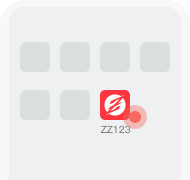
Buster Williams
by Richard S. Ginell
One of jazzs most valuable sidemen, Buster Williams has been able to flourish through many periods of changing fashions in jazz. Best known since the 1980s for his solid, dark tone and highly refined technique on the acoustic bass, the jazz-rock generation knew him as the mobile anchor of Herbie Hancocks exploratory Mwandishi Sextet from 1969 to 1973, doubling on acoustic and electric basses sometimes attached to electronic effects devices.
Williams learned both the double bass and the drums from his father, but having been enormously impressed by Oscar Pettifords recordings, he ultimately decided to concentrate on the bass. After studying theory and composition at Philadelphias Combs College of Music in 1959, Williams joined Jimmy Heaths unit the following year and played with Gene Ammons and Sonny Stitt in 1960 and 1961, as well as behind singers Dakota Staton (1961-62), Betty Carter (1962-63), Sarah Vaughan (1963) and Nancy Wilson (1964-68). The gig with Wilson prompted a move to Los Angeles, where the Jazz Crusaders used him on concert dates and recordings from 1967 to 1969, and he also played briefly with Miles Davis in 1967 and the Bobby Hutcherson/Harold Land quintet. Moving to New York in 1969, Williams joined Hancocks sextet, appearing on all of his Warner Bros. albums, as well as The Prisoner (Blue Note), Sextant (Columbia) and with trumpeter Eddie Hendersons spinoff group on Capricorn and Blue Note. Over a five-year period (1976-1981), Williams led numerous recording sessions for Muse, Denon and Buddah while continuing to freelance before, during and after that span. In the 1980s, he was a member of both the Timeless All-Stars and Sphere, writing a number of compositions for the latter. Among the musicians for whom he has played from the 1980s onward are Kenny Barron, Frank Morgan, Stanley Cowell, Steve Turre, Emily Remler and Larry Coryell.
One of jazzs most valuable sidemen, Buster Williams has been able to flourish through many periods of changing fashions in jazz. Best known since the 1980s for his solid, dark tone and highly refined technique on the acoustic bass, the jazz-rock generation knew him as the mobile anchor of Herbie Hancocks exploratory Mwandishi Sextet from 1969 to 1973, doubling on acoustic and electric basses sometimes attached to electronic effects devices.
Williams learned both the double bass and the drums from his father, but having been enormously impressed by Oscar Pettifords recordings, he ultimately decided to concentrate on the bass. After studying theory and composition at Philadelphias Combs College of Music in 1959, Williams joined Jimmy Heaths unit the following year and played with Gene Ammons and Sonny Stitt in 1960 and 1961, as well as behind singers Dakota Staton (1961-62), Betty Carter (1962-63), Sarah Vaughan (1963) and Nancy Wilson (1964-68). The gig with Wilson prompted a move to Los Angeles, where the Jazz Crusaders used him on concert dates and recordings from 1967 to 1969, and he also played briefly with Miles Davis in 1967 and the Bobby Hutcherson/Harold Land quintet. Moving to New York in 1969, Williams joined Hancocks sextet, appearing on all of his Warner Bros. albums, as well as The Prisoner (Blue Note), Sextant (Columbia) and with trumpeter Eddie Hendersons spinoff group on Capricorn and Blue Note. Over a five-year period (1976-1981), Williams led numerous recording sessions for Muse, Denon and Buddah while continuing to freelance before, during and after that span. In the 1980s, he was a member of both the Timeless All-Stars and Sphere, writing a number of compositions for the latter. Among the musicians for whom he has played from the 1980s onward are Kenny Barron, Frank Morgan, Stanley Cowell, Steve Turre, Emily Remler and Larry Coryell.
하나의













